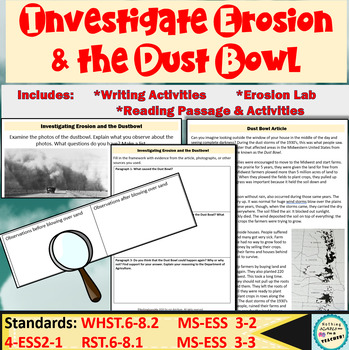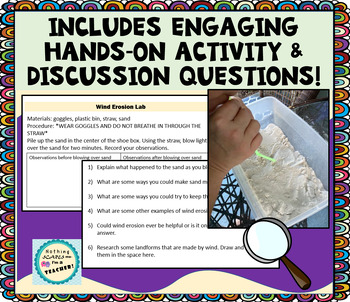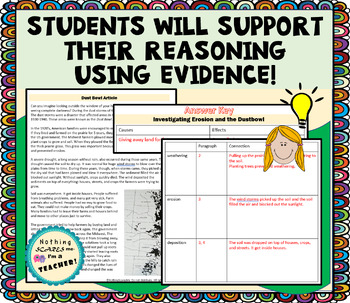Wind Erosion Worksheets Lab and Dust Bowl Article and Activities
- PDF
What educators are saying
Also included in
- No more boring worksheets! Try these engaging hands-on wind patterns activities that will help students really understand the causes of global wind patterns and local wind patterns. Includes 4 activities with articles that describe what causes wind and types of wind patterns including land and sea bPrice $13.49Original Price $15.98Save $2.49
Description
This cross-curricular STEAM activity bundle includes real-life examples of erosion for students to examine. They can read and write about the causes and effects of wind erosion and weathering that caused the dust bowl in the 1930's. This no-prep product is perfect for teaching students about history and science in an engaging and hands-on lab activity! Contains over 9 pages of science, reading, and writing activities plus teaching suggestions.
Includes:
- hands-on wind erosion lab with reflection questions
- reading passage about the dust bowl
- pre-reading activity to assess/build background knowledge
- 3 close reading activities
- writing prompt and frame
- erosion poster template
*Simple materials required for the lab: goggles, shoebox, sand and straw.
*Please Note: You can save $ by purchasing this activity as part of these bundle! Global and Local Wind Patterns Hands On Activities and Worksheet Bundle
If you like this activity, try these!
Sand Dunes and Erosion Hands-On Lab and Close Reading
Erosion, Deposition and Matching Game
Weathering, Erosion and Deposition Earth Science Activities
Physical and Chemical Weathering Lab
******Follow my store for more great activities and ideas! Click HERE to Follow*****
Don't forget to leave a review to earn credits for your next TPT purchase!






